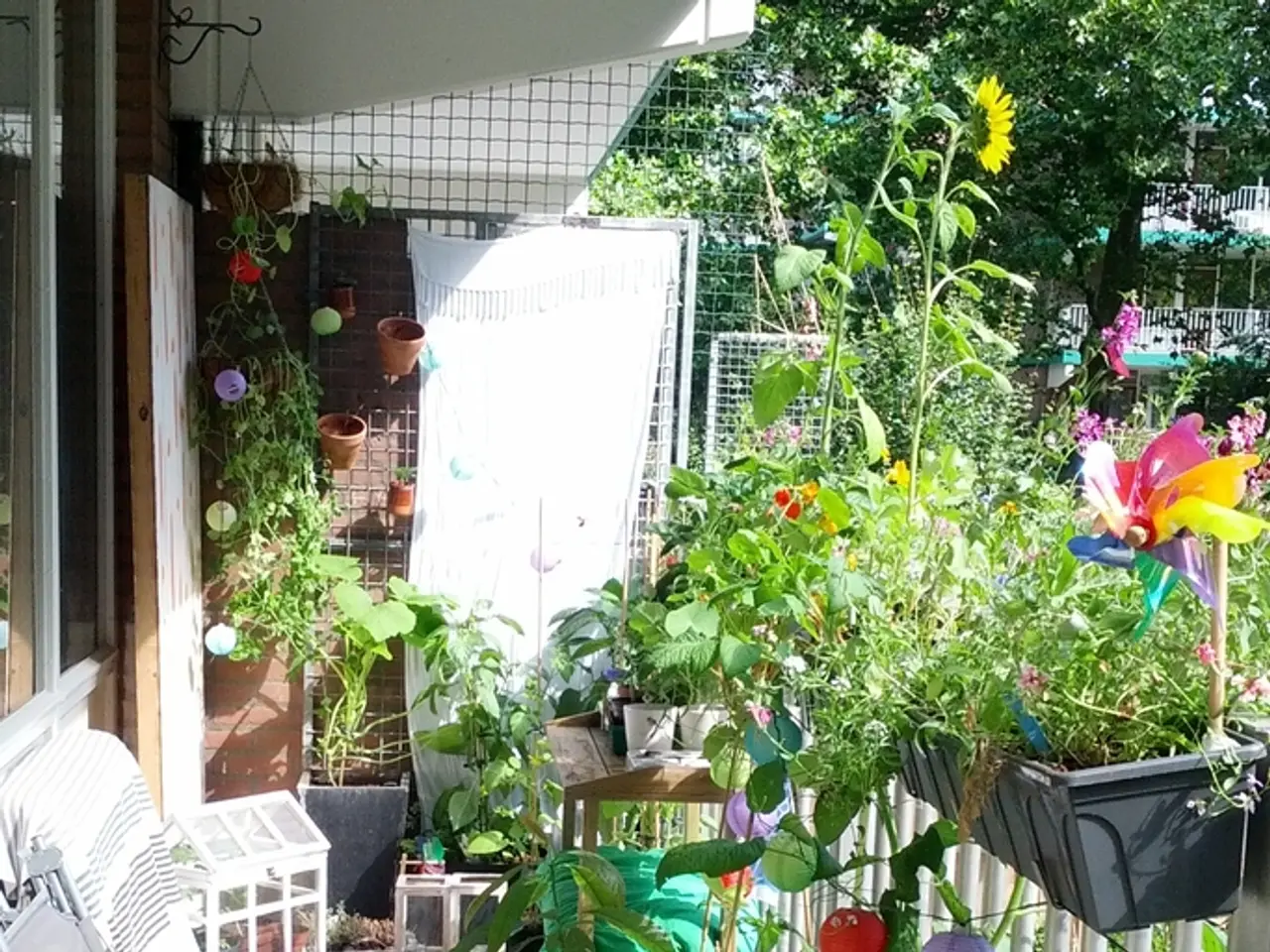Constructing Dwellings for Harmonious Family Life
A community garden can become a rewarding project that inspires creativity and collaboration among family members. This spirit of collaboration extends to the design of modern family homes, where multi-generational living is re-emerging with a fresh twist.
In these homes, grandparents live with their adult children or young families welcome their own parents. This living arrangement is rooted in love, shared experiences, and unwavering support, nurturing tight-knit family relationships, offering emotional support, and strengthening resilience through life's challenges.
To create a home that accommodates various age groups, functionality must take center stage. Modern design strategies focus on enhancing functionality, inclusivity, and family connectivity by creating adaptable, private, and shared spaces that meet the diverse needs of all generations.
Zoning for privacy and independence is a key strategy. Designate separate living quarters or zones for each generation with private bedrooms and bathrooms. Incorporate in-law suites or self-contained apartment-like areas featuring a bedroom, full bath, kitchenette, separate entrance, and sometimes laundry access to promote autonomy and reduce tension.
Accessibility and universal design are also crucial. Wider doorways, step-free access, handrails, walk-in showers, and other mobility-friendly features ensure comfort and accessibility for all, supporting inclusivity and long-term livability.
Open-concept and flexible shared spaces, such as kitchens, dining, and living areas, foster family connectivity while providing enough space for gatherings, entertainment, and play across generations. Multi-functional and adaptable rooms, integrated modular furniture, sliding partitions, and Murphy beds allow rooms to change function as family needs evolve, maximizing space efficiency without sacrificing comfort.
Smart home technology, including smart appliances, automated lighting, and climate control, enhances convenience, energy efficiency, and comfort for all household members. Natural and warm design elements, like earthy color palettes and biophilic design concepts, promote a cozy, nurturing atmosphere suitable for diverse age groups, enhancing emotional well-being and inclusiveness.
Incorporating sensors that monitor daily activities and can alert family members in case of anything unusual brings comfort to families with elderly relatives living under one roof. Home monitoring provides peace of mind, while integrated entertainment solutions, such as home theaters or seamless access to streaming services, transform family gatherings into shared entertainment experiences.
Technology also enhances multi-generational living. Smart home systems, voice-activated systems, and home monitoring facilitate communication, offer reminders for medications or appointments, and provide comfort through safety features. Voice-activated systems can lighten the load of daily tasks for older adults, while also giving younger family members peace of mind.
Outdoor dining areas and play zones are essential for creating flexible spaces that can serve multiple purposes. Al fresco dining can evolve into a cherished family tradition, where conversations and laughter fill the air, transforming ordinary meals into lasting memories. Play zones, where children can play freely while parents or grandparents relax nearby, foster an atmosphere of joy and connection.
Studies reveal that plentiful daylight can create inviting spaces where sharing stories, dreams, and mutual support becomes part of the daily rhythm. Natural light in a home can boost mood and enhance well-being, making it especially important in multi-generational living. Thoughtful floor plans are essential for facilitating dynamic interactions between different generations.
By prioritizing natural light, embracing technology, and making the most of outdoor spaces, families can construct a unique sanctuary that enhances their everyday lives. For more information on this subject, explore the external resource provided, offering additional insights and perspectives on the topic covered in this article.
Windows, with their ability to let in ample natural light, play a significant role in such homes, fostering a joyful and connected atmosphere. Research in the field of artificial intelligence (AI) is being used to develop smart solutions for home-and-garden design, with the goal of automating processes and maximizing comfort.
For instance, AI-powered systems could automatically adjust lighting, climate control, and even outdoor irrigation based on family members' preferences and routines. As AI advances, these systems might also learn family dynamics to further optimize the living space and improve relationships.
The design of these smart systems would be inspired by the concept of family-dynamics, ensuring that they cater to different lifestyle needs. For example, children's activities and playtime could trigger gentle, relaxing music in other parts of the home to maintain a peaceful environment. Similarly, during mealtimes, the garden windows could open, bridging the gap between indoor and outdoor spaces, creating a seamless flow of life.
Moreover, these AI-powered systems could also serve as a source of entertainment, turning ordinary moments into memorable experiences. Imagine playing a family-friendly game that integrates with the smart home system, entertaining everyone while strengthening bonds.
As the days pass and family dynamics evolve, these systems would adapt, ensuring that the home remains a smart and nurturing environment for all. Indeed, just as the community garden brings families and neighbors together, a smart home could serve as a center for connection and growth within the family.



